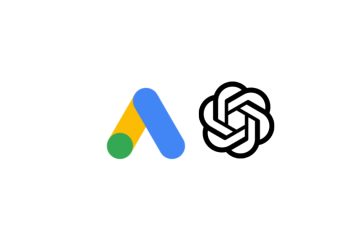Introduction
The rise of artificial intelligence (AI) has disrupted many industries and created new opportunities, especially in the advertising industry. OpenAI’s ChatGPT, a transformer-based language generation model, has had a significant impact on how advertisers interact with their target audience. ChatGPT is capable of understanding and responding to natural language input with human-like text, making it a powerful tool for advertisers. In this blog, we’ll discuss the capabilities of ChatGPT and its potential impact on the advertising industry.
What is ChatGPT?
ChatGPT is a deep learning model that has been trained on a massive corpus of text data from the internet. This allows it to generate human-like text in response to various prompts, such as questions and statements. Unlike traditional chatbots, ChatGPT uses advanced machine learning algorithms to generate responses based on its understanding of the context and meaning of the input, making it much more flexible and capable of handling a wide range of topics and scenarios.
How ChatGPT is Transforming Advertising

Advertisers are always seeking new ways to engage with consumers and build brand awareness. ChatGPT has the potential to revolutionize the way advertisers interact with their target audience by providing a more personal and human-like experience. Here are a few ways that ChatGPT is already making a difference in the advertising industry:
Chatbots
ChatGPT can be integrated into chatbots, which are automated systems that can engage with customers in real-time via messaging platforms like Facebook Messenger, WhatsApp, and WeChat. Chatbots powered by ChatGPT can provide a more natural and human-like experience, making it easier for customers to interact with brands and receive the information they need.
Personalized Advertising
ChatGPT can be used to personalize advertising by generating unique responses based on a customer’s individual preferences, needs, and interests. This allows advertisers to tailor their messages and promotions to specific segments of their target audience, resulting in more effective and relevant advertising.
Content Creation
ChatGPT can be used to generate high-quality, original content for advertising campaigns. This can include product descriptions, promotional messages, and even entire advertising scripts. This can save advertisers time and money, as well as help them stand out from their competitors by providing unique and engaging content.
Customer Service
ChatGPT can also be integrated into customer service systems, allowing brands to provide faster and more accurate responses to customer inquiries. This can help improve customer satisfaction and loyalty, as well as reduce support costs for brands.
Market Research
ChatGPT can be used to conduct market research by generating responses to surveys and focus groups. This can provide advertisers with valuable insights into consumer preferences, needs, and opinions, allowing them to make more informed decisions about their advertising strategies.
The Potential Limitations of ChatGPT in Advertising

While ChatGPT has the potential to transform the advertising industry, it is not without its limitations. Here are a few challenges that advertisers need to be aware of when using ChatGPT:
Bias
ChatGPT is trained on data from the internet, which can contain biases and inaccuracies. Advertisers need to be aware of these biases and take steps to address them, such as fine-tuning the model or providing additional training data.
Regulation
The use of chatbots and AI in advertising is regulated by various laws and regulations, including the General Data Protection Regulation (GDPR) and the Children’s Online Privacy Protection Act (COPPA). Advertisers need to be aware of these regulations and ensure that they are complying with them to avoid legal consequences.
Ethical Concerns
The use of AI in advertising raises ethical concerns about privacy, transparency, and accountability. Advertisers need to be transparent about their use of ChatGPT and ensure that they are collecting, storing, and using customer data in a responsible and ethical manner.
Lack of Emotional Connection
While ChatGPT is capable of generating human-like text, it still lacks the emotional intelligence and empathy of a human. This can result in a lack of emotional connection with consumers, which can negatively impact the effectiveness of advertising campaigns.
Conclusion
ChatGPT has the potential to revolutionize the advertising industry by providing a more personal and human-like experience for consumers. However, advertisers need to be aware of its limitations and take steps to address them to ensure that they are using ChatGPT in a responsible and effective manner. As the technology continues to evolve and improve, it will be interesting to see how ChatGPT and other language models will continue to shape the advertising industry in the future.
In conclusion, ChatGPT is a powerful tool for advertisers, providing new opportunities for personalized advertising, content creation, customer service, and market research. However, it is important to be aware of its limitations and use it in a responsible and ethical manner to ensure that it is being used effectively and delivering the desired results. The advertising industry is constantly evolving, and ChatGPT is just one of the many exciting advancements that are helping to shape the future of marketing and advertising.

Hello, I’m Ali Raza, the brain behind Digital Realm Trends.
Hailing from the vibrant world of digital marketing, I’ve honed my skills over years. Based on my experience, I’m here to unravel the complexities of digital marketing, analytics and paid marketing, crafted for individuals like you. Join me in uncovering the power of digital marketing tools and strategies, fueled by experimentation and insights.




